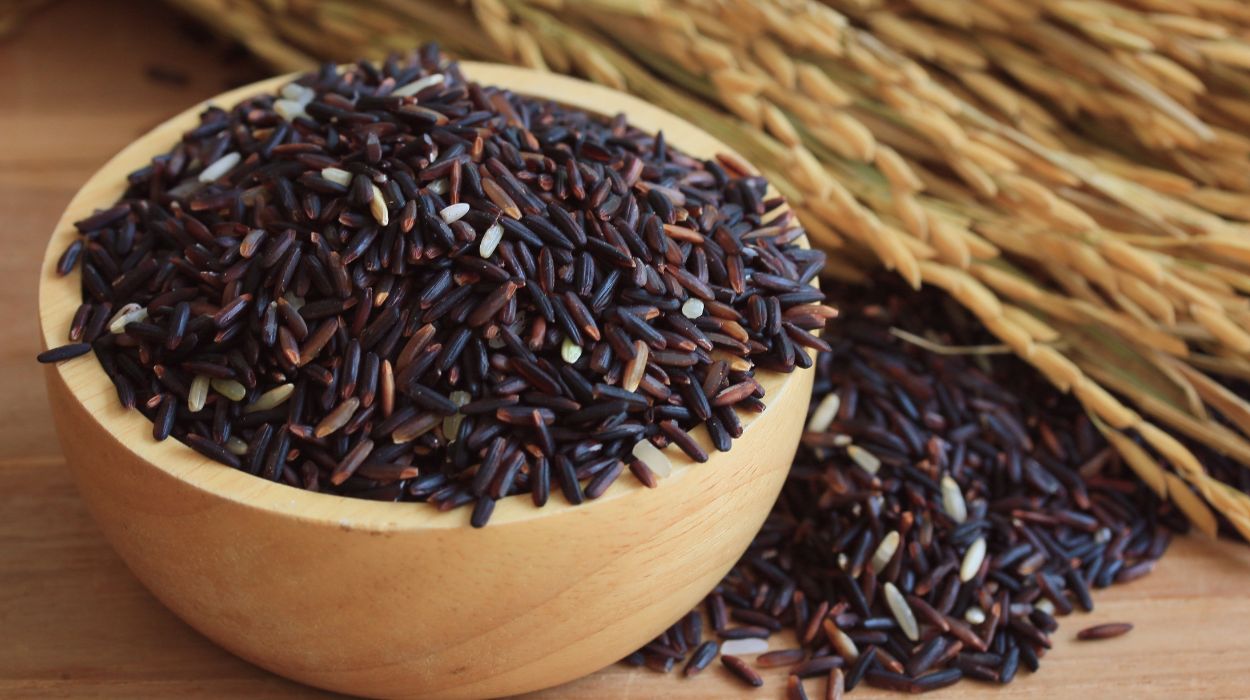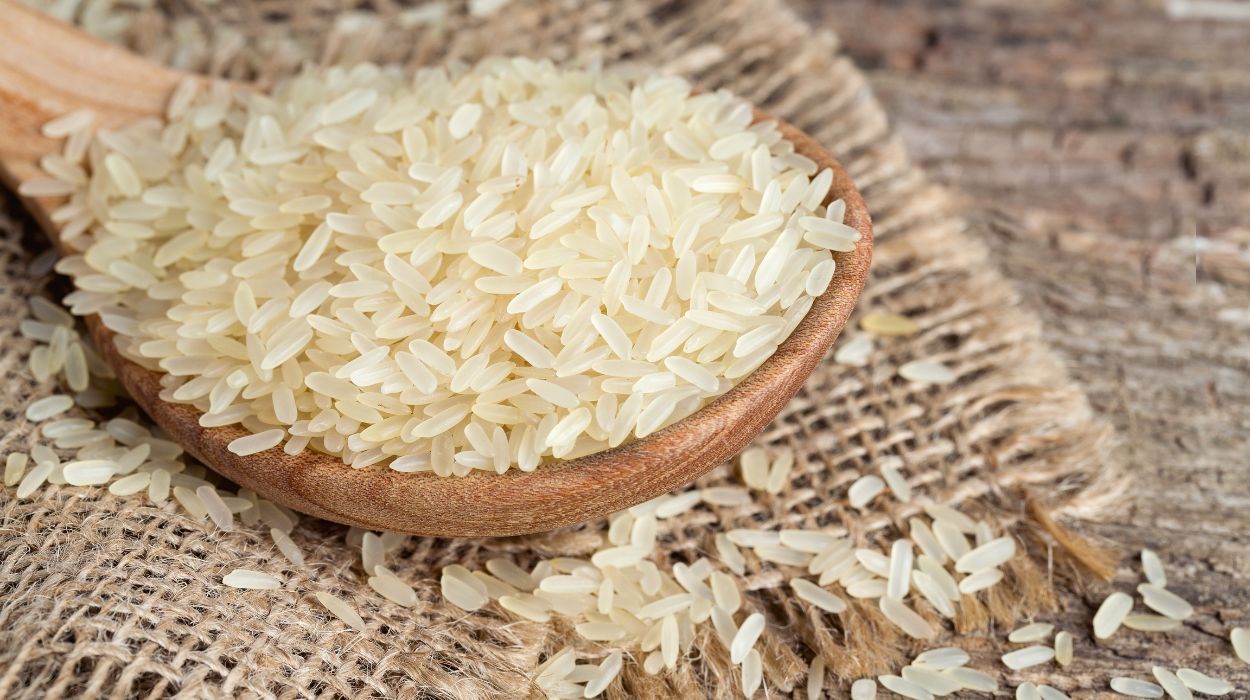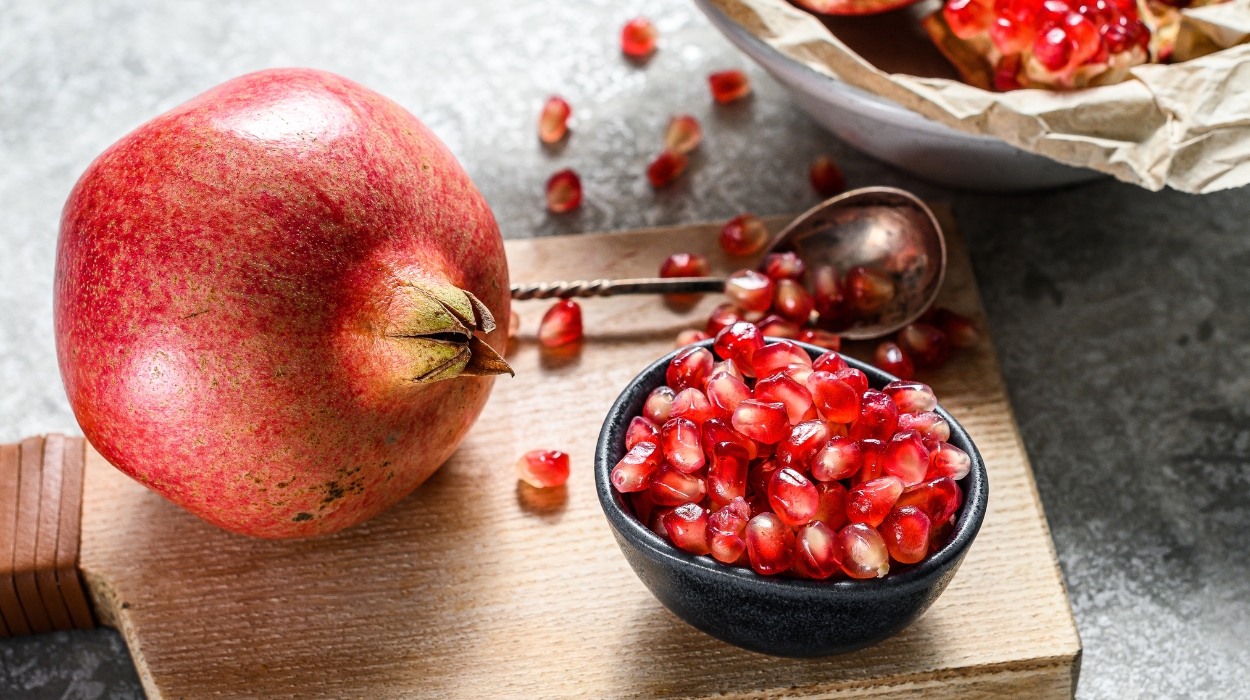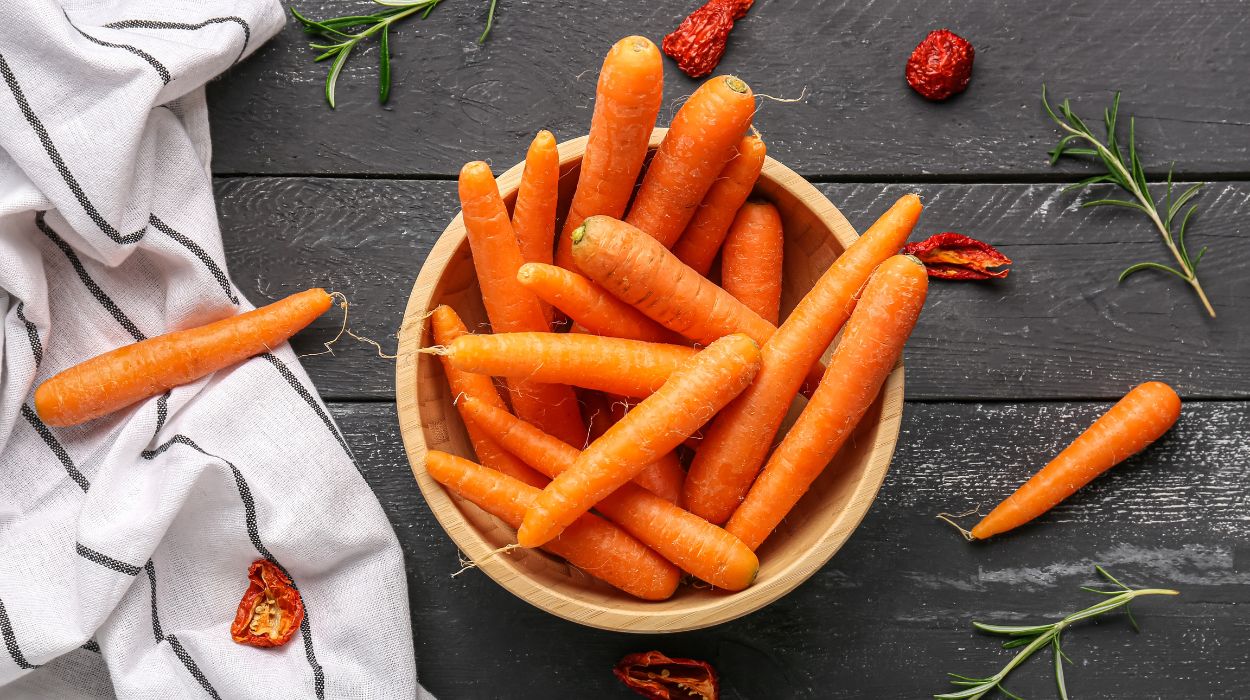 Author's opinion
Author's opinion
Healthiest Rice: Best 5 Rice You Can Eat In 2024

Some types of rice are healthier than others. Photo: kuvona/Shutterstock
Rice provides 20% of the calories[1] consumed around the world. According to the National Institute of Health, 3.5 billion people[2] rely on rice for their nutrition, especially in areas such as Asia, Africa, and South America. But is rice healthy?
Well, some types of rice are healthier than others. And, unfortunately, the unhealthiest types of rice are the ones most of us eat. While we recommend eating the healthiest rice varieties every week, there are some types of rice you should avoid. Read on to discover the top healthy rice choices and which types of rice to avoid.
What Is The Healthiest Rice?
Eating more rice can be healthy, but not all types of rice are good for you. So, what is the healthiest rice? Discover the 5 healthiest rice varieties you should eat.
- Brown rice
- Wild rice
- Black rice (Aka forbidden rice)
- Red rice
- Parboiled rice
5 Healthiest Rice You Should Eat
These are the healthiest rice to eat due to their nutritional value. Here we’re talking about the cultivar of rice, rather than the shape of the rice. All rice varieties can come as long grain rice, medium grain rice, or short grain rice, and which you choose depends on the type of best healthy rice dish you’re preparing.
Brown Rice

This is a type of whole-grain rice that still contains its bran layer and germ. After these outer layers are removed, what’s left are refined grains known as “polished” rice, i.e., white rice. However, the bran and germ layers are the most nutritious[3], which is why this rice is considered healthier than white rice.
Brown and white rice provide the same calories, but brown rice contains more protein, making it the best for bodybuilding. This rice also contains almost three times as much fiber. Fiber from whole-grain rice can improve gut health[4], improving metabolism, blood sugar balance[5], and satiety.
In addition, brown rice is high in nutrients such as magnesium and zinc. Most people are low in magnesium, which increases the risk of chronic illnesses[6] such as diabetes, cardiovascular disease, and dementia.
Brown basmati rice is the most common type and is great used in a stir fry. Glutinous cooked brown rice is stickier and can be used to make rice pudding or sticky rice, usually prepared with coconut milk. This rice also makes the healthiest rice cakes.
Wild Rice
This is another type of whole-grain rice that is a form of aquatic grass. It has a nutty flavor and is rich in vitamins, minerals, protein, fiber, and disease-fighting antioxidants. Studies show that the antioxidant activity of wild rice[7] is 30 times greater than white rice and can be purchased in bulk at most health food stores.
The health benefits include:
- Lowering cholesterol levels
- Lowering blood pressure[8]
- Improving heart health[9]
- Regulating sugar-in-blood balance
Studies in mice show that this rice can lower inflammation levels[10] and increase levels of good gut microbes, possibly improving digestive health more than other rice varieties. Thus, this rice is a good option for healthy rice dishes.
Black Rice (AKA Forbidden Rice)

Ever wondered what gives black rice its color? Black rice, also known as “forbidden rice,” is especially high in dark-pigmented antioxidants[11].
Black rice bran contains high levels of anthocyanins, purple-colored antioxidant compounds[12] that have been studied due to their health-promoting properties. Anthocyanins are proven to
- Boost gut health
- Lower inflammation
- Improve brain function[13]
- Lower the risk of obesity
- Improve the balance of sugar in blood
- Slow breast cancer cell[12] growth
The anti-diabetes potential of black rice is so promising scientists think that future anti-diabetes drugs will be designed by studying the constituents of black rice bran.
Red Rice
Popular varieties of red rice are Thai red cargo rice and Himalayan red rice. This type of rice is high in resveratrol[14], another powerful antioxidant present in red-colored functional foods such as red grapes, berries, and apples. The health benefits of resveratrol have been studied for decades, and studies suggest resveratrol may protect against numerous diseases ranging from cancer to heart failure.
And this rice has another superpower. Studies show that this rice can inhibit amylase[15] – the enzyme in your saliva that breaks down carbohydrates into sugar. This reduces the amount of sugar available for you to absorb and may make red rice the healthiest rice for weight loss.
Besides being the healthiest rice for weight loss, studies in mice suggest that red rice bran extract even activates genes that help balance blood sugar[16]. Finally, cell-based studies suggest that red rice extract can inhibit herpes virus[17] and cancer cells.
[Note: This rice isn’t the same as ‘red yeast rice,’ a type of rice containing natural statins[18] made by fermenting rice with a red-colored mold[19].]
Parboiled Rice

Parboiled rice is white or brown rice that’s been part-cooked and redried, making it faster to cook at home. White parboiled rice is more common.
A recent systematic review suggests that parboiled rice is better[2] for sugar-in-blood balance than both brown and white rice. It’s also higher in calcium, selenium, and B vitamins and lower in antinutrients like phytic acid. Phytic acid is an ingredient in certain foods that can decrease the absorption of the nutrients in that food.
What’s more, reheated parboiled rice[20] has a low glycemic index compared to fresh-cooked white rice, making next-day parboiled rice even better for you. Cooked rice forms resistant starch[21] as it cools down – a form of carbohydrate humans can’t digest (though it’s great for your gut microbiome).
Compared to normal rice, parboiled rice has a more chewy texture. Studies show it takes people 25% longer to eat reheated parboiled rice, which slows the rise in blood sugar – simply because you’re eating more slowly.
Make sure to go for brown parboiled rice because white parboiled rice has a higher glycemic index[22].
Is It Healthy Eating Rice Every Day?
Lots of people eat rice every day. Eating rice daily can be healthy as long as you’re choosing whole-grain rice the majority of the time. However, most of the rice consumed daily around the world is plain white rice. That’s a problem because white rice has a high glycemic index, spiking the sugar levels in your blood, and can increase your risk of developing type 2 diabetes.
We recommend replacing white rice with brown rice as much as you can. Eating whole grains – such as brown, wild, black, or red rice – daily can promote satiety and blood sugar balance and even extend your lifespan[23] by lowering your risk of heart disease and cancer[24].
What Happens To Your Body When You Eat Rice?
After eating rice, your gut breaks down the carbohydrates into sugar, which is absorbed into your bloodstream alongside the other nutrients. The fiber and resistant starch (carbohydrates you can’t break down) go to your intestines and feed your gut bacteria.
But your body will react differently depending on the type of rice grains you eat.
For instance, when you eat whole grain or parboiled rice, your blood sugar will rise more slowly. More fiber or resistant starch will reach your gut, supporting gut health and improving gut motility[25].
Eating more whole-grain rice, such as wild rice, instead of wheat products may even improve chronic gastrointestinal issues such as irritable bowel syndrome[26] (IBS).
On the other hand, when you eat white rice, the sugar levels in your blood will spike more quickly and less fiber will reach your gut. Eating too much white rice can contribute to constipation[27] and insulin resistance, increasing your risk of type 2 diabetes[14]. These are the main differences between brown and white rice.
Less Nutritious Rice Should Not Eat
We’ve talked a lot about the types of best rice to eat more of, but which ones should you avoid? Here are some of the most common varieties of white rice to avoid:
- Basmati rice
- Jasmine rice
- Arborio rice
- Sushi rice
- Pre-made packaged rice
- Fried rice (usually made with white rice)
However, not all types of white rice are the same. The healthiest white rice is basmati rice.
Studies suggest that white jasmine rice is the worst, triggering high blood sugar[14] and insulin levels compared to other types of white rice. Despite providing the same amount of calories per gram, white basmati rice contains significantly more protein than jasmine rice.
So, if you enjoy white rice from time to time, opt for basmati rice as plain white rice tends to have a higher glycemic index.
Final Thought
There are many varieties of rice, but some are better for you than others. Rice is a staple food around the world and can contribute to a healthy diet – as long as you eat whole-grain rice such as brown rice.
Whole grain rice still contains its bran and germ, retaining all of the beneficial nutrients such as vitamins, minerals, antioxidants, and fiber. White rice, on the other hand, is much less nutritious, leading to blood sugar spikes and increasing the risk of type 2 diabetes if eaten regularly.
Next time you go food shopping, stock up on whole-grain rice varieties such as brown-, wild-, red-, and black rice.
Resources
MANA adheres to strict sourcing guidelines and abstains from utilizing tertiary references. We rely on peer-reviewed studies, academic research from reputable medical associations and institutions to ensure the accuracy of our articles. For more information regarding our editorial process, please refer to the provided resources.
- Fukagawa, N.K. and Ziska, L.H. (2019). Rice: Importance for Global Nutrition. Journal of Nutritional Science and Vitaminology, [online] 65(Supplement), pp.S2–S3. doi:https://doi.org/10.3177/jnsv.65.s2.
- Subhrajit Bhar, Bose, T.K., Dutta, A. and Mande, S.S. (2021). A perspective on the benefits of consumption of parboiled rice over brown rice for glycaemic control. European Journal of Nutrition, [online] 61(2), pp.615–624. doi:https://doi.org/10.1007/s00394-021-02694-x.
- R. Renuka Devi and C. Arumughan (2007). Phytochemical characterization of defatted rice bran and optimization of a process for their extraction and enrichment. Bioresource Technology, [online] 98(16), pp.3037–3043. doi:https://doi.org/10.1016/j.biortech.2006.10.009.
- Jayani Kulathunga and Şenay Şimşek (2022). A Review: Cereals on Modulating the Microbiota/Metabolome for Metabolic Health. Current Nutrition Reports, [online] 11(3), pp.371–385. doi:https://doi.org/10.1007/s13668-022-00424-1.
- Mohan, V., Spiegelman, D., Vasudevan Sudha, Rajagopal Gayathri, Hong, B., Kallingal Praseena, Ranjit Mohan Anjana, Wedick, N.M., Arumugam, K., Malik, V., Ramachandran, S., Mookambika Ramya Bai, Christiani Jeyakumar Henry, Hu, F.B., Willett, W.C. and Krishnaswamy, K. (2014). Effect of Brown Rice, White Rice, and Brown Rice with Legumes on Blood Glucose and Insulin Responses in Overweight Asian Indians: A Randomized Controlled Trial. Diabetes Technology & Therapeutics, [online] 16(5), pp.317–325. doi:https://doi.org/10.1089/dia.2013.0259.
- Uwe Gröber, Schmidt, J. and Klaus Kisters (2015). Magnesium in Prevention and Therapy. Nutrients, [online] 7(9), pp.8199–8226. doi:https://doi.org/10.3390/nu7095388.
- Qiu, Y., Liu Q and Trust Beta (2009). Antioxidant Activity of Commercial Wild Rice and Identification of Flavonoid Compounds in Active Fractions. Journal of Agricultural and Food Chemistry, [online] 57(16), pp.7543–7551. doi:https://doi.org/10.1021/jf901074b.
- Yu, X.-T., Chu, M., Chu, C., Du, Y., Shi, J., Liu, X., Liu, Y., Zhang, H., Zhang, Z. and Ning, Y. (2020). Wild rice (Zizania spp.): A review of its nutritional constituents, phytochemicals, antioxidant activities, and health-promoting effects. Food Chemistry, [online] 331, pp.127293–127293. doi:https://doi.org/10.1016/j.foodchem.2020.127293.
- Surendiran Gangadaran, Maha Alsaif, Fatemeh Ramezani Kapourchali and Moghadasian, M.H. (2014). Nutritional constituents and health benefits of wild rice (Zizaniaspp.). Nutrition Reviews, [online] 72(4), pp.227–236. doi:https://doi.org/10.1111/nure.12101.
- Moghadasian, M.H., Kaur, R., Kostal, K., Joshi, A.A., Mahboubeh Molaei, Le, K., Fischer, G., Bonomini, F., Favero, G., Branden, Leung-Shing, V., Wuzinski, M., Seo, A.I. and Bay, D.C. (2019). Anti-Atherosclerotic Properties of Wild Rice in Low-Density Lipoprotein Receptor Knockout Mice: The Gut Microbiome, Cytokines, and Metabolomics Study. Nutrients, [online] 11(12), pp.2894–2894. doi:https://doi.org/10.3390/nu11122894.
- Vivian Cristina Ito and Luíz Gustavo Lacerda (2019). Black rice (Oryza sativa L.): A review of its historical aspects, chemical composition, nutritional and functional properties, and applications and processing technologies. Food Chemistry, [online] 301, pp.125304–125304. doi:https://doi.org/10.1016/j.foodchem.2019.125304.
- Ghasemzadeh, A., Mohamad Taghi Karbalaii, Hawa and Asmah Rahmat (2018). Phytochemical constituents, antioxidant activity, and antiproliferative properties of black, red, and brown rice bran. Chemistry Central Journal, [online] 12(1). doi:https://doi.org/10.1186/s13065-018-0382-9.
- Panchal, S.K., John, O.D., Mathai, M.L. and Brown, L. (2022). Anthocyanins in Chronic Diseases: The Power of Purple. Nutrients, [online] 14(10), pp.2161–2161. doi:https://doi.org/10.3390/nu14102161.
- Hee, C., Chuah, K.-A., Mishra, A., Ratnam, V. and Tilakavati Karupaiah (2016). Evaluating Crossbred Red Rice Variants for Postprandial Glucometabolic Responses: A Comparison with Commercial Varieties. Nutrients, [online] 8(5), pp.308–308. doi:https://doi.org/10.3390/nu8050308.
- Boué, S.M., Daigle, K.W., Chen, M., Cao, H. and Heiman, M.L. (2016). Antidiabetic Potential of Purple and Red Rice (Oryza sativa L.) Bran Extracts. Journal of Agricultural and Food Chemistry, [online] 64(26), pp.5345–5353. doi:https://doi.org/10.1021/acs.jafc.6b01909.
- Narongsuk Munkong, Arthid Thim-uam, Sirinat Pengnet, Pintusorn Hansakul, Nuntiya Somparn, Jarinyaporn Naowaboot, Jiraporn Tocharus and Chainarong Tocharus (2022). Effects of Red Rice Bran Extract on High-Fat Diet-Induced Obesity and Insulin Resistance in Mice. Journal of Food Science and Nutrition, [online] 27(2), pp.180–187. doi:https://doi.org/10.3746/pnf.2022.27.2.180.
- Boonpa Suantai, Kanyaluck Jantakee, Thida Kaewkod, Sirikwan Sangboonruang, Thararat Chitov and Yingmanee Tragoolpua (2022). Anthocyanins in Red Jasmine Rice (Oryza sativa L.) Extracts and Efficacy on Inhibition of Herpes Simplex Virus, Free Radicals and Cancer Cell. Nutrients, [online] 14(9), pp.1905–1905. doi:https://doi.org/10.3390/nu14091905.
- AL, E. (2016). [With red rice against cholesterol?]. Duodecim; laaketieteellinen aikakauskirja, [online] 126(6). Available at: https://pubmed.ncbi.nlm.nih.gov/20597312/
- Twarużek, M., Iwona Ałtyn and Kosicki, R. (2021). Dietary Supplements Based on Red Yeast Rice—A Source of Citrinin? Toxins, [online] 13(7), pp.497–497. doi:https://doi.org/10.3390/toxins13070497.
- Lu, L., Venn, B., Lu, J., Monro, J. and Rush, E. (2017). Effect of Cold Storage and Reheating of Parboiled Rice on Postprandial Glycaemic Response, Satiety, Palatability and Chewed Particle Size Distribution. Nutrients, [online] 9(5), pp.475–475. doi:https://doi.org/10.3390/nu9050475.
- Strozyk, S., Rogowicz-Frontczak, A., Stanisław Piłaciński, LeThanh-Blicharz, J., Koperska, A. and Dorota Zozulińska‐Ziółkiewicz (2022). Influence of resistant starch resulting from the cooling of rice on postprandial glycemia in type 1 diabetes. Nutrition & Diabetes, [online] 12(1). doi:https://doi.org/10.1038/s41387-022-00196-1.
- Shanmugam Shobana, Nagarajan Lakshmipriya, Mookambika Ramya Bai, Rajagopal Gayathri, Vaidya, R., Vasudevan Sudha, Malleshi, N.G., Krishnaswamy, K., Christiani Jeyakumar Henry, Ranjit Mohan Anjana, Ranjit Unnikrishnan and Mohan, V. (2017). Even minimal polishing of an Indian parboiled brown rice variety leads to increased glycemic responses. PubMed, [online] 26(5), pp.829–836. doi:https://doi.org/10.6133/apjcn.112016.08.
- Ma, X., Tang, W., Yang, Y., Zhang, Q., Zheng, J. and Xiang, Y. (2016). Association between whole grain intake and all-cause mortality: a meta-analysis of cohort studies. Oncotarget, [online] 7(38), pp.61996–62005. doi:https://doi.org/10.18632/oncotarget.11491.
- McRae, M.P. (2017). Health Benefits of Dietary Whole Grains: An Umbrella Review of Meta-analyses. Journal of Chiropractic Medicine, [online] 16(1), pp.10–18. doi:https://doi.org/10.1016/j.jcm.2016.08.008.
- Jung, S., Oh, M., Park, S.-H. and Chae, S. (2020). Effects of rice-based and wheat-based diets on bowel movements in young Korean women with functional constipation. European Journal of Clinical Nutrition, [online] 74(11), pp.1565–1575. doi:https://doi.org/10.1038/s41430-020-0636-1.
- Sittikorn Linlawan, Tanisa Patcharatrakul, Nicha Somlaw and Sutep Gonlachanvit (2019). Effect of Rice, Wheat, and Mung Bean Ingestion on Intestinal Gas Production and Postprandial Gastrointestinal Symptoms in Non-Constipation Irritable Bowel Syndrome Patients. Nutrients, [online] 11(9), pp.2061–2061. doi:https://doi.org/10.3390/nu11092061.
- Asakura, K., Masayasu, S. and Sasaki, S. (2017). Dietary intake, physical activity, and time management are associated with constipation in preschool children in Japan. PubMed, [online] 26(1), pp.118–129. doi:https://doi.org/10.6133/apjcn.112015.02.






